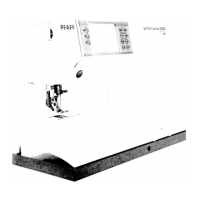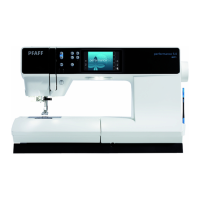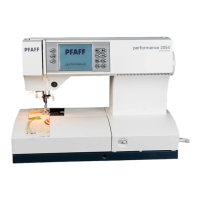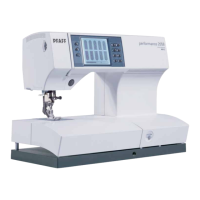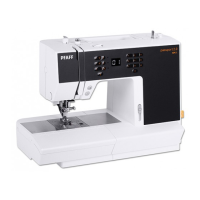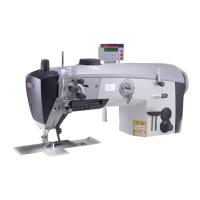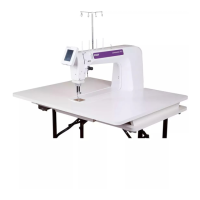52
22. Adjustment of equal forward and reverse stitch length
(for all forward and reverse controlled stitch patterns)
Requirement:
The darning program must be sewn as an exact rectangle (fig. 51) and not as a rhombus
(fig. 52 and 53).
The buttonhole bartack must cover the beginning of the right buttonhole seam (fig. 54).
For this purpose the machine must be at operating temperature after 10 to 15 minutes turn-on time.
Check:
• Turn on the machine.
• Touch the „info menu“ icon twice.
The „context menu“ is shown now.
• Touch the down arrow to browse to the „machine test“.
• Touch the „machine test“ icon.
• Enter the code 254.
• Touch „ok“ to confirm your entry.
• Touch the „adjusting pattern“ icon.
• Touch icon „198“.
• Place a piece of fabric underneath fancy stitch foot „2A“.
• Sew the adjusting pattern „198“.
Preliminary adjustment:
• If the adjusting program „198“ was sewn according to fig. 52, turn the adjusting
eccentric with a screwdriver just 2 to 4 degrees in direction „A“ according to fig. 55.
• If the adjusting program „198“ was sewn according to fig. 53, turn the adjusting
eccentric according to fig. 55 just 2 to 4 degrees in direction „B“.
Test:
• Sew adjusting program „198“ and check.
Precise adjustment:
• Touch the „info menu“ icon.
• Touch icon „200“.
• Place a piece of fabric underneath buttonhole foot „5A“.
• Sew adjusting pattern „200“.
• The eyelet should be nicely rounded and the wedge tack should be sewn evenly, with
a tolerance of plus/minus 2 stitches (fig. 54).
• If stitches get shorter turn adjusting eccentric slightly towards you.
If stitches get longer turn adjusting eccentric slightly away from you.
It is important that the two programs are in their own tolerance as well as in
tolerance to each other.
Note:
If very different sewing threads or difficult fabrics are used, buttonholes, utility stitches or fancy stitches may
be sewn with shifts in the pattern design.
To correct this, the customer can adjust the balance.
Always correct only the reverse stitch length.
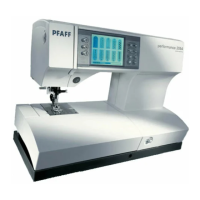
